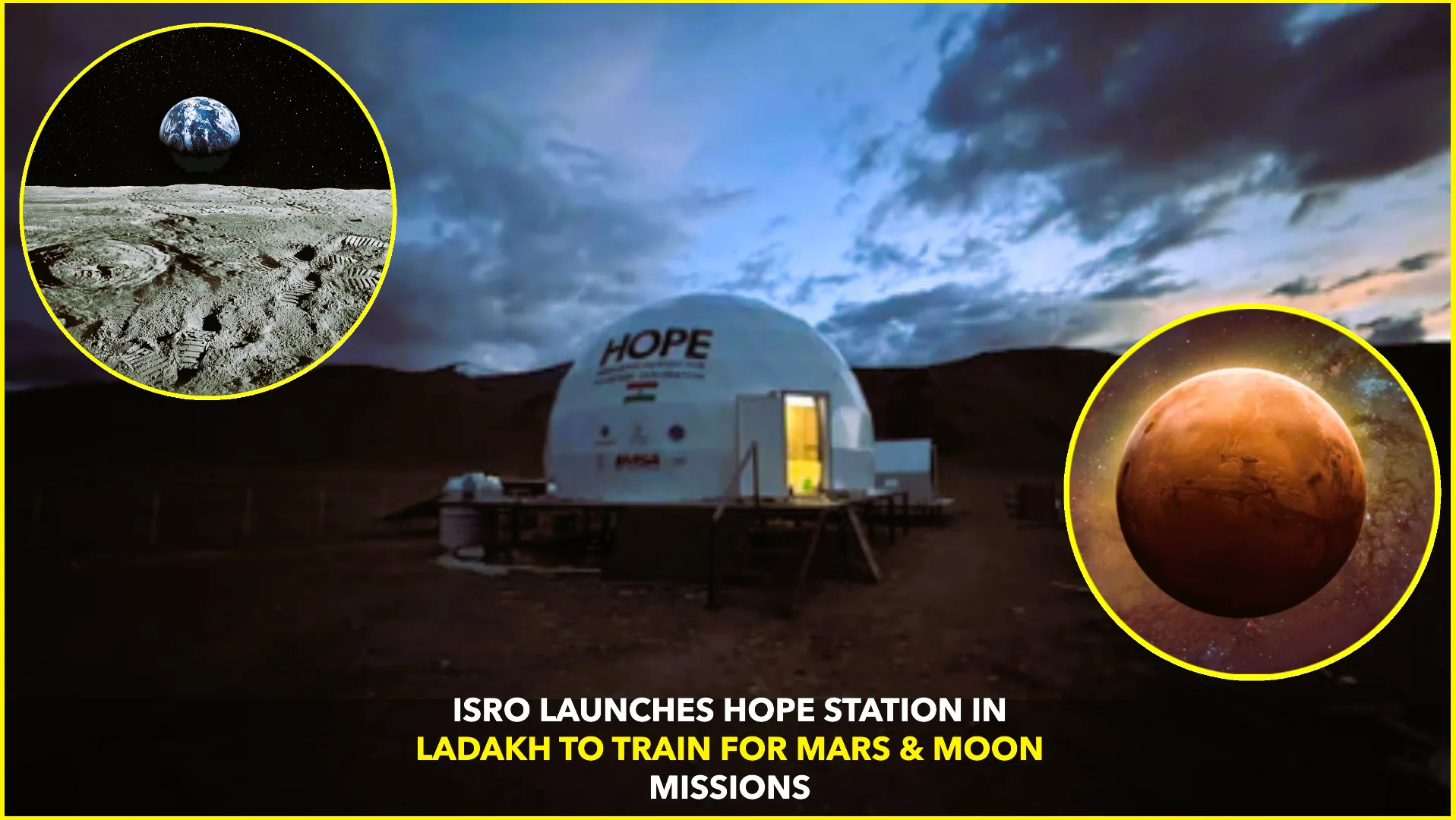India has taken a monumental leap toward its ambition of sending humans to space. The Indian Space Research Organisation (ISRO) has established the HOPE (Himalayan Outpost for Planetary Exploration) station in the remote Tso Kar Valley of Ladakh. Situated at a staggering altitude of 4,530 meters, the site mimics the extreme conditions of the Moon and Mars, serving as an analog environment for human spaceflight preparation.
The location was chosen for its striking resemblance to extraterrestrial terrains, characterized by low oxygen levels, high ultraviolet radiation, extreme cold, and reduced atmospheric pressure — conditions similar to those astronauts will face on the lunar or Martian surface.
HOPE is a part of ISRO’s broader plan to support its Gaganyaan program and future interplanetary missions. It includes modular living quarters, utility hubs, and support infrastructure that allow selected crew members to conduct simulated missions in isolation. These simulations are conducted over a 10-day analog mission, testing both psychological endurance and technical performance under harsh conditions.
According to ISRO officials, the Tso Kar Valley was identified after extensive research by experts from the Space Applications Centre (SAC), Ahmedabad, and the Defence Institute of High Altitude Research (DIHAR). Its dry lake beds, barren landscape, and thin atmosphere offer a perfect Mars- or Moon-like training ground.
“The HOPE initiative represents a new frontier for ISRO, combining field research, space medicine, and astronaut training in an Earth-based analog setting,” an ISRO official was quoted by The Hindu.
What Happens at HOPE?
During the 10-day analog missions, selected personnel — a mix of scientists, engineers, and potential astronaut candidates — live inside the base, replicating space mission scenarios. They undergo:
- Physical performance tests
- Psychological endurance checks
- Crew coordination tasks
- Life-support system handling
- Emergency response simulations
These simulations help ISRO refine strategies for long-duration human spaceflight, including developing countermeasures to space hazards like radiation and isolation.
India’s Growing Human Spaceflight Ambition
The establishment of HOPE aligns with ISRO’s ambitious Gaganyaan mission, which aims to send Indian astronauts into low Earth orbit. While the first crewed flight is expected by 2025, such analog simulations will enhance crew preparedness, hardware testing, and mission planning.
The HOPE facility also sets the stage for possible international collaborations. Experts believe it could serve as a training site for global astronauts and researchers, much like NASA’s analog sites in Hawaii and Iceland.
As India accelerates its space exploration agenda, initiatives like HOPE demonstrate ISRO’s commitment to indigenous innovation, cost-effective mission readiness, and world-class astronaut training.
Sources:
- ISRO Press Release
- The Hindu: “ISRO Sets Up HOPE Station in Ladakh”
- Times of India Science & Tech Report










